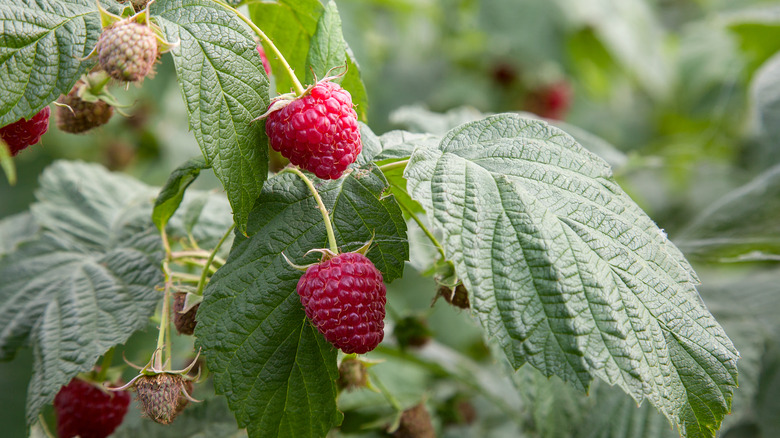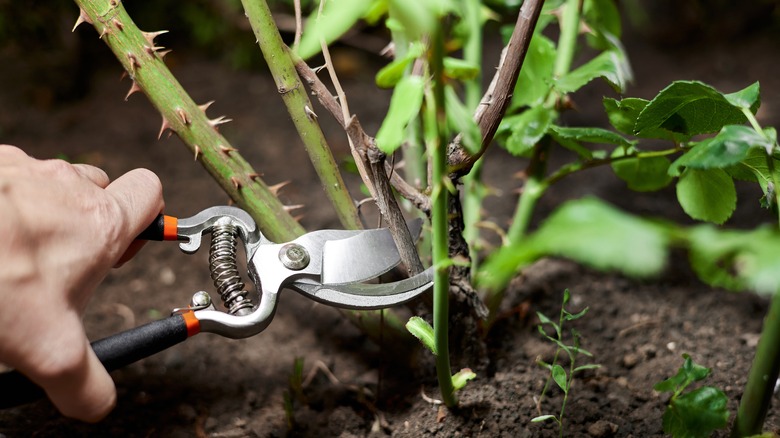What Does It Mean If A Plant Has A Cane?
Plant terminology that seems to be wedged into many of our brains include words like stem and stalk — even if we don't have the greenest of thumbs. The word cane, however, isn't often linked to plants. For some varieties though, canes are an essential part of plant anatomy and play a vital role in the flowering and fruiting processes. If you care for raspberries or have grown roses in your garden, you're probably familiar with the word cane and what it means.
Essentially, canes are thick, strong stems that are responsible for holding the flower or bearing the fruit of a plant. Some look like your usual stem, whereas others take on a rougher appearance and play a major role throughout the years — this is particularly true for raspberries and blackberries. Canes can be trained, overwintered, pruned, and harvested from. If it's your first introduction to this term, here's a brief rundown of what canes are and how they interact in a plant's structure. We'll also clear up differences between canes, cane family plants, and plants with the name cane.
What are canes and what do they do for plants?
At first glance, you might notice that canes tend to be stiffer and thicker than the bendable green stems found on other plants and flowers (like those on tulips, for example). Canes can anatomically be found on fruits like raspberries, blackberries, and grapes, as well as roses. But canes' differences don't stop at looks and textures. Canes are unique in how they function and how long their lifecycle is in comparison to other types of trunks and stems.
When it comes to raspberries and blackberries, there are two types of canes that exist, and each are valuable to fruit production and growth. Knowing the difference is essential when you're aiming to collect berries eventually and pruning raspberry bushes. They're called primocanes (known as fall-bearing) and floricanes (known as summer-bearing). Primocanes will produce fruit in the first year after planting, whereas floricanes need a year of growth before they produce any fruit. So don't chop those summer-bearing canes accidentally when pruning and cutting back for the winter!
On roses, canes serve as a structural component and hold water for the flower. As with both fruiting and flowering plants, canes are essential for their existence and continuation. These canes are part of the plant and differ from the plant family and plant variety also named cane. Those in the plant family are considered canes or grasses and include bamboo. There are also types of plants with cane in the name, such as mass cane plants and dumb cane plants — all of which are different.

